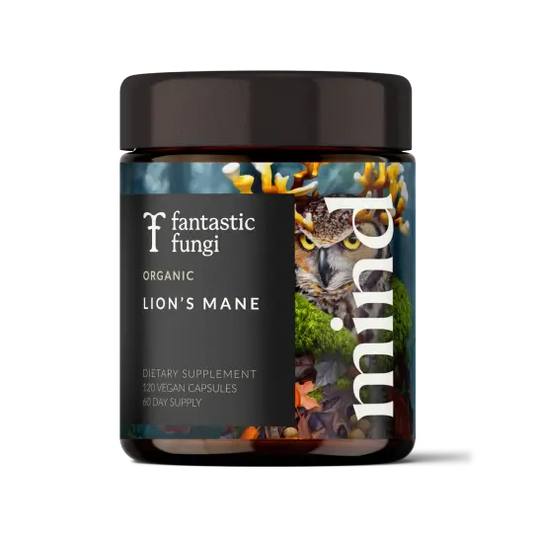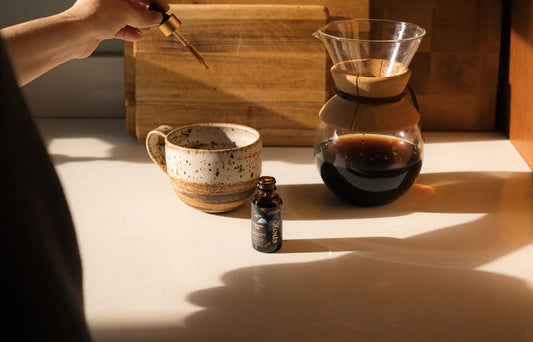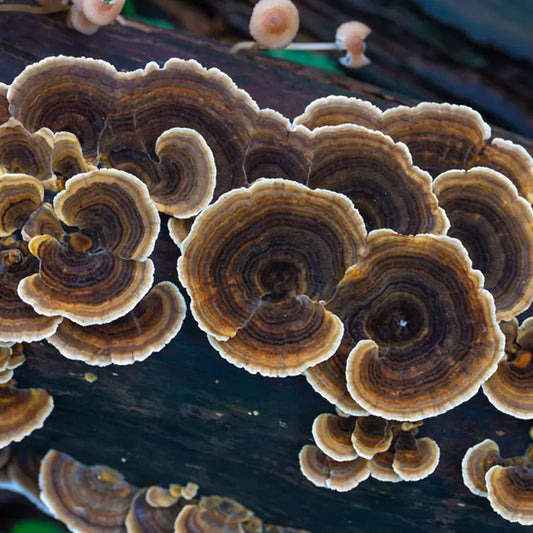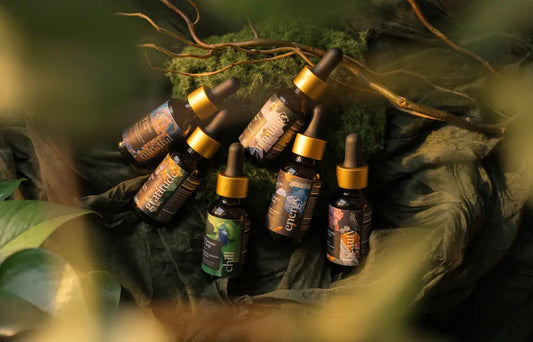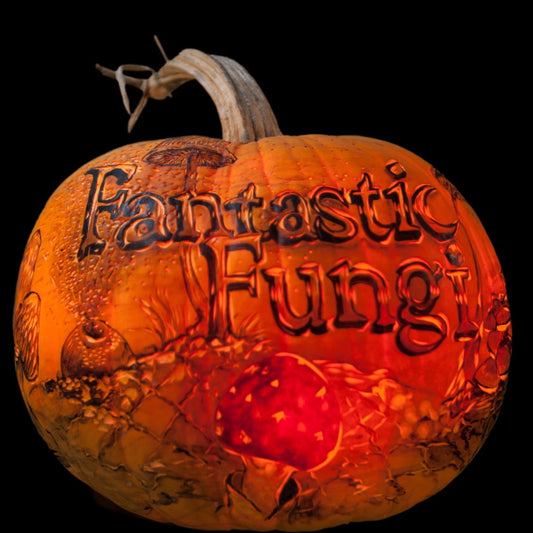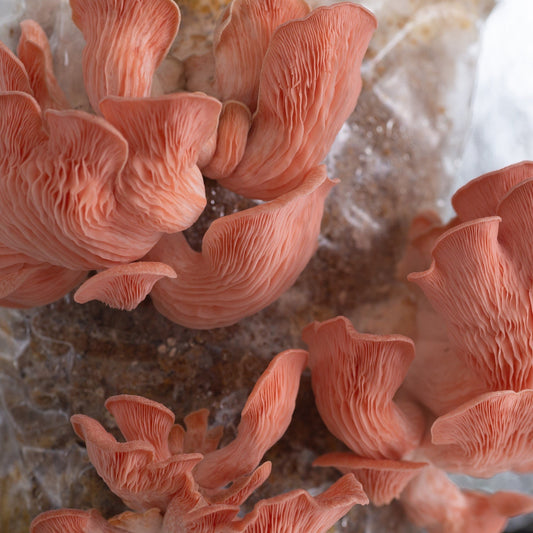
Our Best Tips for Growing Mushrooms at Home
Mushroom farming certainly takes time, effort and know-how — and some species entirely elude human attempts to commercially grow them. (Ahem, we’re talking about you, Chanterelles and Morels…) But others are relatively easy to grow, even at home with no experience. Once you get the hang of the process, mushrooms take less effort than many plants. So, if you aspire to have a green thumb but just can’t seem to keep plants alive, try mushrooms!
Read on for our best tips for growing mushrooms at home. Plus, we’ll share a list of the species that are suitable for beginners — along with ideas for what to do with your home-grown ‘shrooms!
6 Mushrooms You Can Grow at Home
- Buttons/Cremini/Portobellos: Sure, they’re the most basic mushrooms, but they’re also tasty and versatile. Grow them right on your countertop or in your basement, and you’ll have fresh mushrooms for all your favorite recipes.
- Enoki: These mild, tender mushrooms look like noodles, and they’re simple to grow in even small spaces. Simmer them in your favorite soups or dip small clusters in batter and pan-fry them.
- Lion’s Mane: This is another easy indoor option. As long as you keep them moist as they grow, you’ll get plump, fluffy Lion’s Mane mushrooms for all your meatless seafood recipes (and all those brain benefits, too).*
- Oysters (including King Oyster): This is the perfect mushroom for beginners. Pick up a DIY kit and watch the mushrooms grow practically before your eyes. Waking up to a fresh crop of vibrant blue or rosy pink Oysters is such a thrill!
- Reishi: This species is better suited for more experienced growers — and patience is a must since they grow slowly (several weeks to several months). You also have to extract or process Reishi mushrooms to unlock the goodness they hold, but the payoff is worth it!*
- Shiitake: If you’re handy with a drill and saw, you can make your own Shiitake logs and turn your yard into a mini mushroom farm. Your logs will fruit in fall and spring, and they’ll keep producing for a few years! (Not so handy? Read on — you can still grow Shiitake!)
Those are the most popular species, but you can also find indoor and outdoor grow kits for Maitake, Chestnuts and even Chicken of the Woods!
Tips for Growing Mushrooms at Home
Start with a grow kit. Just like using plant “starts” or seedlings is easier than growing from seeds, so is using a grow kit that’s already inoculated with your mushroom of choice. You can find grow kits online, or ask your go-to mushroom seller (such as at the farmers’ market) about local options.
Look for pre-inoculated logs. Maybe you have some outdoor space but no power tools — and you want to try growing Shiitakes or Chicken of the Woods. No problem. You can buy a log (or several) that are already filled with “plugs” (mushroom spores). Once you’re ready to expand your mushroom “garden,” enlist a friend or two to help. Find someone with the tools and know-how to DIY some logs and make a day of it! Look for mushroom logs at the farmers’ market.
Keep your mushrooms moist. There’s a reason why the best mushroom hunting happens after a rain. Mushrooms need water, just like we do! For indoor grow kits, keep a fine-mist spray bottle on hand and make sure they don’t dry out. Try not to let your outdoor logs dry out — spray them with a hose during the drier seasons.
Get the kids involved. Spraying the grow kits, checking the outdoor logs and even harvesting the fruits of your labor are all “chores” that little ones can help with. If you’re trying to get a picky eater on board with more mushroom dishes, start with the ones you’ve grown yourself. Research has actually shown that kids are more willing to try new foods when they’ve had a hand in the production process!
Be patient when growing outdoors. Indoor kits are designed to grow quickly — but the outdoor logs take their sweet time. You’ll sometimes need to wait months (especially if you start your inoculation project over the winter). Nature works on her time, and we can’t rush her. The first time you taste a dish made with mushrooms you grew yourself, all that waiting will be worth it!
How to Use Your Home-Grown Mushrooms
If you find that mushrooms in your local supermarket tend to get slimy or dry before you can use them, then you’ll especially love how fresh and tender home-grown ones can be! Use them in any number of creative and tasty ways (here are 13 suggestions!) When you have more mushrooms than you can use, freeze them or dry them.
- To freeze mushrooms, trim any tough stems and compost them. Slice or chop and place on a parchment-lined baking sheet. Freeze, then transfer to sealed containers and use within a few months. (Freezing on the baking sheet ensures the mushrooms don’t stick together.)
- You can also use this technique with cooked mushrooms. Make a flavorful vegan soup base by sauteing mushrooms, alliums (onions and garlic) with your favorite herbs in olive oil. Season well with salt and pepper, allow to cool and freeze. You can use ice cube trays to portion them into what you need for a single meal or serving.
- Drying mushrooms intensifies their flavor and preserves them beautifully. Trim and slice your mushrooms, then dehydrate them at 125F in a dehydrator or 150F in the oven. Check on them every hour or so. Store in sealed jars. (Dried mushrooms make a wonderful gift!)
Have you ever grown mushrooms at home? Tag us on social media with pics of your hobby mushroom “farms”!!
